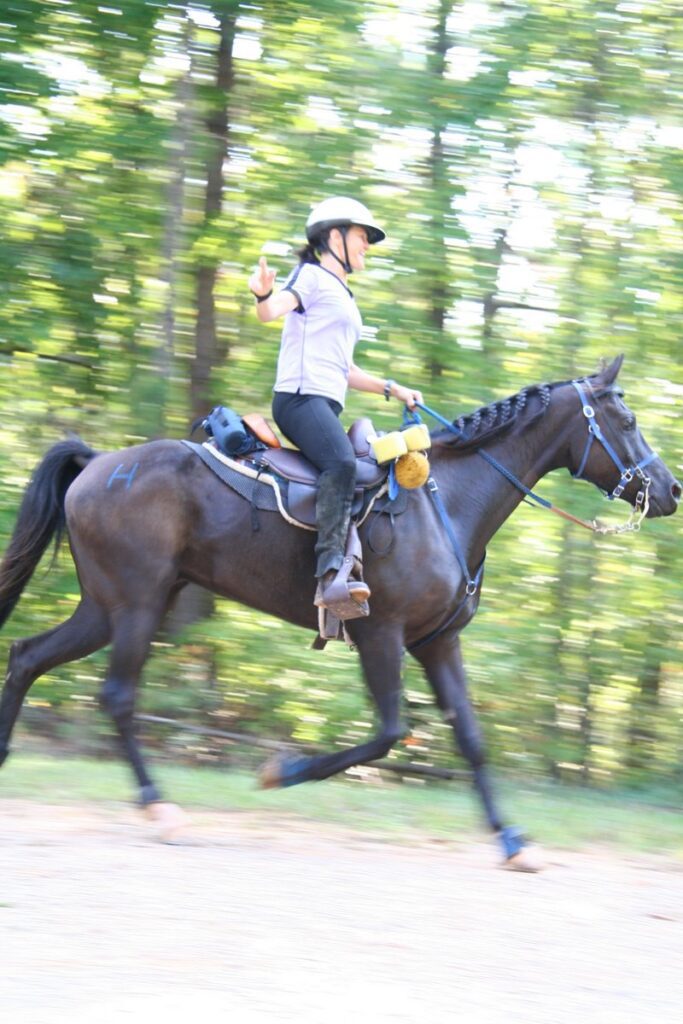Whether on the trail or on the ranch, a long ride deserves the right training and conditioning
Whether the endurance needed is for races, competitive trail-riding, or a long day on the ranch, endurance horseback riding is a popular pastime in the United States. Despite the oversight of several committees and organizations like the American Endurance Ride Conference (AERC), endurance riding also remains a sport that requires caution to avoid horse injuries.
Riders need to condition their horses properly for endurance rides, according to Polk Equine Veterinarian Dr. Katie Hennessy. A horse should not go straight into an endurance ride without first being trained for it. Dr. Hennessy recommends that riders find a trainer who can help guide the conditioning process. “That trainer is experienced and should be able to get the rider on the right track and make sure they can accomplish their goals with the horse,” she explains.
Dr. Hennessy also warns against being a “weekend rider”— that is, a rider who is “gung-ho” about the sport when an event comes up, but doesn’t do the necessary work beforehand to make sure the horse is up to the challenge.
Dr. Hennessy also advises having a veterinarian examine the horse to make sure it’s capable of performing the task before training begins. Some horse body types are better for endurance than others— the Arabian breed, for example, dominates the endurance field. “It’s an intense sport, and you want to make sure you have a horse that can stand up to it,” Dr. Hennessy adds.
Hydration and feeding schedules are also important to keep horses in competitive shape once they’ve been conditioned and trained. Competitive rides can make this difficult because horses often have to eat and drink while undergoing veterinarian checks and being around other horses. Dehydration is a danger just like any other intense sport.
Leg injuries are another big threat to endurance horses. The types of injuries vary— horses can experience tendon and ligament injuries as a result of overuse, soreness and hoof injuries from rough terrain, or pulled muscles from spooks and slips. Horseshoes are important in protecting horses’ feet from some of these issues, Dr. Hennessy points out, although sometimes the shoes can be pulled off by the uneven or rocky terrain. Riders should stop immediately if they feel the horse limping, favoring one leg, not wanting to move forward, or just overall instability. “You don’t want to continue riding on an injury— that can make it worse,” she warns. “So get off and contact the veterinarian.”
Endurance competitions have veterinarian check stations for this reason, and riders should ask the vet to take a look. Once off the horse, the rider can feel for heat or swelling in the horse’s legs. Riders on trail or ranch rides should call the vet and bring around the trailer if possible. Most importantly, riders need to be aware of their horses’ needs and not sacrifice the health of the horse to finish the ride.
Dr. Hennessy’s last piece of advice is this: “Take care of your horse and yourself, and just have fun.”
CREDITS
story by KELSEY TRESSLER

